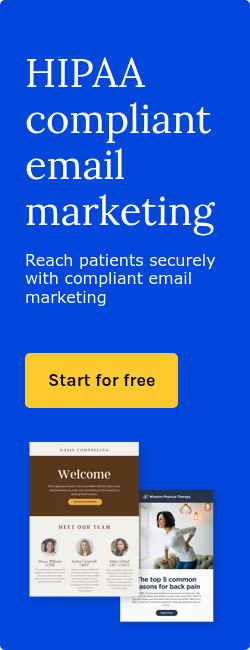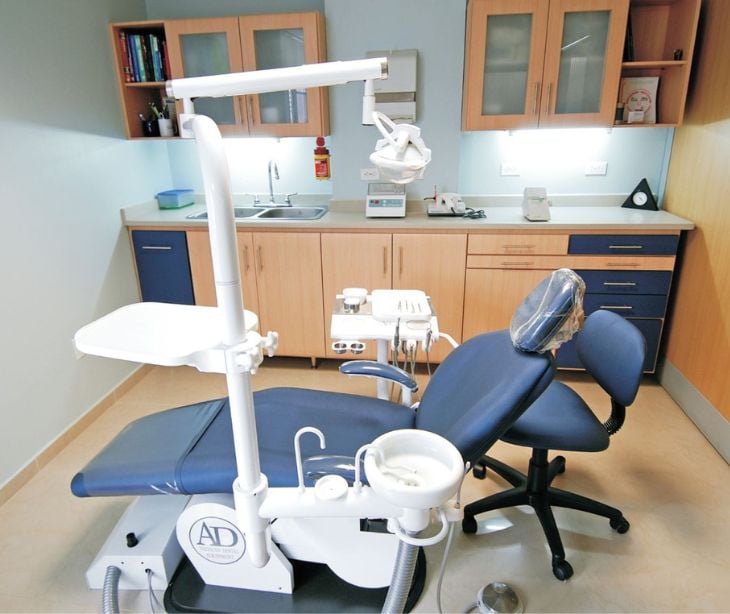
An email newsletter is a powerful marketing tool to help healthcare practitioners foster patient engagement and cultivate strong patient care. Still, healthcare organizations must ensure that they respect HIPAA compliant marketing guidelines.
We've recently dived further into HIPAA compliant email newsletters. Why they are important and how to properly build and send a newsletter. So let's explore the topic further to answer the following question. How often should healthcare organizations send their newsletters?
Related: Ten tips to revolutionize your relationship with patients through email in 2023
An email newsletter is a powerful tool for patient outreach
A good healthcare email newsletter can do several things at once. It can drive loyalty, spread awareness, and increase business. These email newsletters can include updates, research, milestones, and at times, patient-specific details. Newsletters about a healthcare practice are effective because they:
- Keep an organization on a patient's minds
- Actively engage patients and remind them to consider their health needs
- Offer organizations an opportunity to share best health practices and advice
- Allow patients to easily forward information about a practice to friends and family
When done correctly, a newsletter becomes a one-stop location for patients to find their health-related news. Patients may even look forward to receiving it.
HIPAA compliant email newsletters embrace the increasingly more prominent role that HIPAA compliant email is taking in a patient journey. However, with any HIPAA compliant communication, it is necessary to ensure HIPAA's guidelines are strictly followed. The key is to keep patients informed while maintaining their privacy.
But what makes a newsletter HIPAA compliant?
The Health Insurance Portability and Accountability Act (HIPAA) ensures that protected health information (PHI) always remains secure. The Privacy Rule sets the guidelines for using and disclosing patients' data. The Security Rule sets the necessary administrative, technical, and physical safeguards to safeguard PHI/ePHI. Following HIPAA guidelines allows practitioners to embrace HIPAA marketing and increase patient engagement.
To guarantee HIPAA compliant email communication, healthcare organizations must have all business associates sign a business associate agreement, such as data storage vendors and email providers.
Learn more: How can I sign a BAA with Paubox?
Beyond this, healthcare organizations and their vendors must use strict cybersecurity layers that follow the HIPAA rules. This means implementing encryption, perimeter defenses, and strong access controls. This also means receiving proper patient authorization to email patients and minimizing the use of PHI as needed. By doing so, healthcare organizations can protect PHI while implementing effective marketing strategies.
What makes a good HIPAA compliant email newsletter?
A HIPAA compliant email newsletter provides space for a healthcare organization to inform, educate, and promote. Each email should have a goal and should cater to the needs of the organization along with the needs of its patients. A good newsletter will be personal, instructive, and helpful without revealing PHI.
Read more: HIPAA compliant email newsletters: tips and best practices
Each newsletter should offer the reader something of value to keep recipients engaged and ensure that future emails will be read and opened. To further this, it is important not to send every newsletter to everyone. Segmentation targets specific groups with tailored content to smaller groups based on, for example, location or treatment.
Beyond a sound structure (short and simple!), use relevant headlines, bullet points, and snapshots within. Curate the content to who it is being sent to and why. In healthcare email marketing, striking the right balance is crucial for engaging diverse audiences.
So how often should you send your newsletter?
Once a newsletter is planned and prepped, it is also important to consider frequency. Once a day? Once a week? Once a month? As with everything, when depends on the needs of the healthcare organization and the newsletter itself.
There are several dos and don'ts to consider when thinking about frequency.
- Do consider the content and the outcome you are looking for.
- Do offer frequency options based on subscribers' desires.
- Do let them choose when and how often to hear from you.
- Don't bombard all patients with marketing messages.
- Don't send long messages frequently (shorter lengths for higher frequency).
If your subscribers enjoy staying up to date on important health news, then once a week is a good amount. If your newsletter focuses on what's happening at your practice or in the industry, then once a month may work.
There isn't one right way; the most crucial part is finding your own rhythm. Take a measured approach but be dependable. Do not send newsletters randomly. Pick a day (or days) and stick with it.
Stay on top with a solid marketing plan
No matter what you decide about frequency, be consistent. If you've grown a loyal following, your patients will wait for the next read.
Healthcare organizations must learn about newsletter marketing to retain and create new patients. With Paubox Marketing, organizations can send personalized emails to leverage care journeys and impact patient care in general.
Compared to standard marketing tools, Paubox Marketing is the best option for maintaining HIPAA compliance while harnessing the power of personalized email marketing.
Subscribe to Paubox Weekly
Every Friday we'll bring you the most important news from Paubox. Our aim is to make you smarter, faster.




